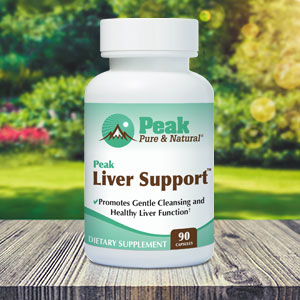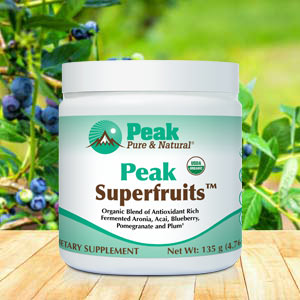Get Easy Health Digest™ in your inbox and don’t miss a thing when you subscribe today. Plus, get the free bonus report, Mother Nature’s Tips, Tricks and Remedies for Cholesterol, Blood Pressure & Blood Sugar as my way of saying welcome to the community!
Kidney disease and cluster conditions lead to dangerous heart syndrome

A syndrome is defined as “a group of symptoms which consistently occur together, or a condition characterized by a set of associated symptoms.”
Well, there’s a new health syndrome in town that you need to know about.
The American Heart Association predicts that a third of all adults in the United States are at risk of developing this syndrome, which they say can negatively affect almost every major organ in the body.
The syndrome involves an “overlap” of four major diseases we already know about.
Here’s everything you need to know.
What is CKM syndrome?
CKM syndrome, or cardiovascular-kidney-metabolic syndrome, acknowledges the shared risk factors for cardiovascular disease, kidney disease, Type 2 diabetes, and obesity.
You may already know that Type 2 diabetes and obesity are part of a cluster of conditions that make up metabolic syndrome.
According to the AHA, one in three U.S. adults has three or more of these risk factors, and combining metabolic syndrome with kidney disease can be deadly.
These conditions not only overlap, but one can cause another, and so on. They also increase the risk for heart-related problems including stroke, heart attack and heart failure.
In fact, for people with chronic kidney disease, the most frequent cause of death is cardiovascular disease.
CKM affects nearly every major organ in the body, including the heart, brain, kidneys and liver.
Its biggest impact is on the cardiovascular system. It affects heart muscle function, the rate of fatty buildup in the arteries and electrical impulses in the heart.
The stages of CKM syndrome
In its recently released Presidential Advisory, the AHA outlines four progressive stages of CKM.
Determining where someone stands in this hierarchy can help determine their level of risk for CKM and what actions to take.
One thing you should know, though: this isn’t just for “older folks.” The AHA recommends that screening for signs of CKM should begin as early as age 30.
- Stage 0. You have no risk factors. The goal at this stage is preventing CKM syndrome by achieving and maintaining ideal health based on the American Heart Association’s Life’s Essential 8™ recommendations. Eat a heart-healthy diet and be active for at least 30 minutes per day.
- Stage 1: There are early warning signs of CKM. You may have excess body fat, especially belly fat (visceral fat). You may also have prediabetes. To prevent moving to Stage 2, follow the prevention recommendations for Stage 0 and lose at least 5% of your body weight.
- Stage 2: You’re starting to show risks of CKM, including kidney disease, type 2 diabetes, high blood pressure or high cholesterol. You probably have developed kidney disease. To keep from getting to Stage 3, get your blood pressure, cholesterol, and blood sugar checked by a doctor yearly, and follow your doctor’s instructions to keep kidney disease from getting worse.
- Stage 3: You’re starting to see heart and blood vessel problems. Prevention is the same, but don’t be fooled; while you may not have clear symptoms of heart disease, your blood vessels are starting to feel the strain.
- Stage 4: You now have clear signs and symptoms of cardiovascular disease. You may have had a heart attack, stroke, or heart failure. In stage 4a, your kidneys haven’t failed… yet. In stage 4b, you’re looking at kidney failure.
The four diseases included in CKM syndrome are not new. What’s new is that the AHA has officially grouped them into a condition of their own. This can help inform doctors on how to treat patients with these conditions.
If you have any of these conditions and start following these recommendations today, you might never have to experience any part of CKM syndrome. And if you do, you’ll have some clear guidance on how to keep living and even reversing these conditions.
Editor’s note: There are perfectly safe and natural ways to decrease your risk of blood clots including the 25-cent vitamin, the nutrient that acts as a natural blood thinner and the powerful herb that helps clear plaque. To discover these and other secrets of long-lived hearts, click here for Hushed Up Natural Heart Cures and Common Misconceptions of Popular Heart Treatments!
Sources:
Third of all adults across US at risk of developing major new heart syndrome — MSN.com
Heart disease risk, prevention and management redefined — American Heart Association
What you need to know about CKM syndrome — American Kidney Fund
Cardiovascular-Kidney-Metabolic Health: A Presidential Advisory From the American Heart Association — Circulation














